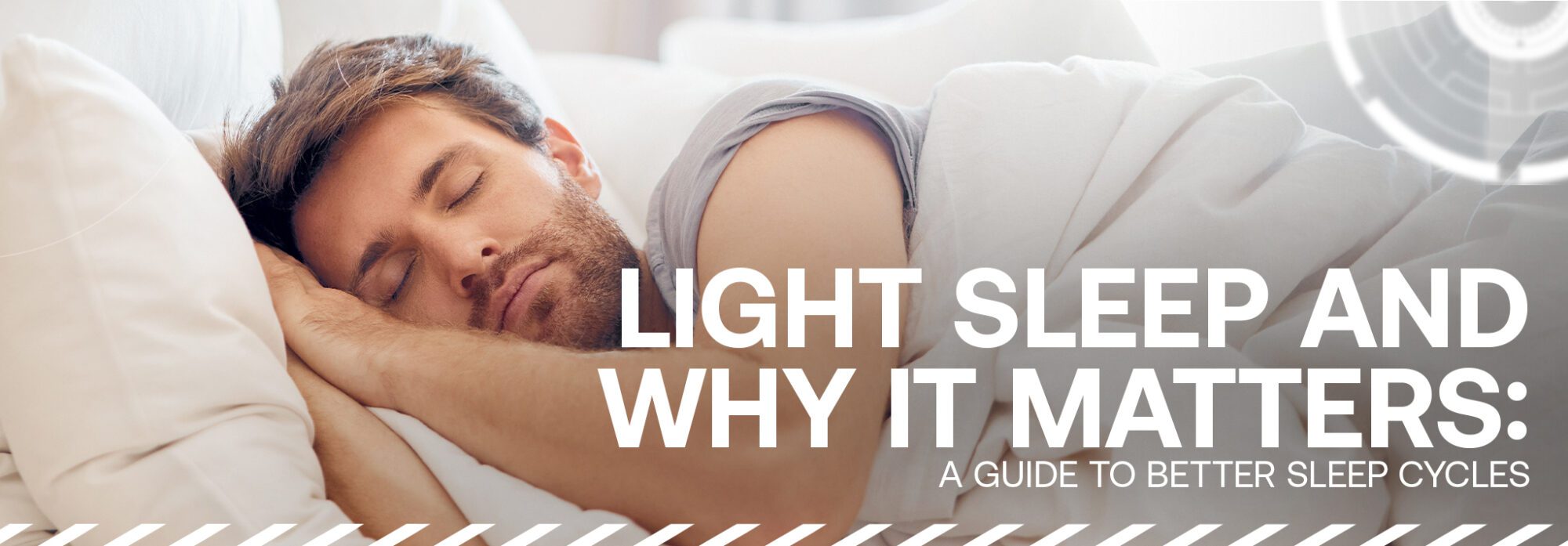
Light Sleep and Why It Matters: A Guide to Better Sleep Cycles
What Is Light Sleep, Exactly?
Light sleep refers to the first two stages of the sleep cycle: Stage 1 (N1) and Stage 2 (N2). It’s when you start transitioning from wakefulness to slumber. Your heart rate slows, muscles relax, and body temperature drops. Think of it as the warm-up phase before your body dives into the more restorative stages of sleep, like deep sleep and REM.
In light sleep, your brain is still active but much less so than when you’re awake. You’re also more sensitive to sounds, movements, and other disturbances. That’s why if you’ve ever been jolted awake by a creaking door or your partner shifting in bed, chances are you were in light sleep.
Interestingly, light sleep isn’t bad. In fact, it’s essential. This stage helps process memories and supports your nervous system. Most adults will spend about 50-60% of their total sleep time in light sleep.
How to Calculate Your Light Sleep
Tracking your light sleep used to be something reserved for sleep labs, but now wearables have made it pretty simple. To calculate your light sleep, you’ll need to:
- Use a wearable sleep tracker: Devices like smartwatches, rings, or bands track your sleep cycles using a combination of heart rate variability, body movements, and sometimes skin temperature.
- Check the breakdown: Most devices will give you a morning report showing time spent in each stage (light, deep, REM).
- Compare patterns: Light sleep usually makes up the bulk of your sleep—roughly 4-5 hours if you sleep for 7-8 hours total.
Some wearables, like Pison Perform, leverage advanced biosignal detection (think beyond just heart rate) to provide more nuanced insights into how your nervous system responds throughout the night—including during light sleep stages.
Why Should You Care About Light Sleep?
While deep sleep and REM get all the attention, light sleep has some underrated benefits. It’s a transitionary phase, but still crucial for:
- Memory consolidation
- Regulating mood and emotional health
- Prepping the body for deep sleep and REM
- Supporting cardiovascular recovery
If you’re skimping on quality light sleep, you may wake up groggy, even if you clocked enough hours in bed.
How to Improve Light Sleep
Alright, so you’ve figured out you’re spending most of your night in light sleep—but how do you make sure it’s actually restorative?
1. Optimize Your Sleep Environment
Light sleepers are often more sensitive to disruptions. Block out light with blackout curtains and minimize noise with a white noise machine or earplugs.
2. Stick to a Consistent Schedule
Your circadian rhythm loves routine. Try to go to bed and wake up at the same time every day, even on weekends.
3. Limit Blue Light Exposure Before Bed
Put down your devices at least 30-60 minutes before sleep. Blue light can mess with melatonin production, making it harder to drift from light sleep into deeper stages.
4. Manage Stress
Practice deep breathing, meditation, or light stretching before bed. High stress levels keep you more reactive to stimuli, making you more likely to wake up during light sleep.
5. Track and Adjust
Use your wearable data to spot patterns. Are you waking up more often when your room is warmer than usual? Did that late-night coffee push your light sleep into the early morning?
Why Wearables Like Pison Perform Are a Game-Changer
Not all wearables are created equal. While many give you surface-level sleep metrics, devices powered by Pison Perform technology stand out by reading neuromuscular signals in addition to traditional biometrics. This means deeper insights into how your nervous system is performing—even during light sleep.
The better you understand these subtle patterns, the easier it is to make small adjustments that lead to big gains in your sleep quality.



